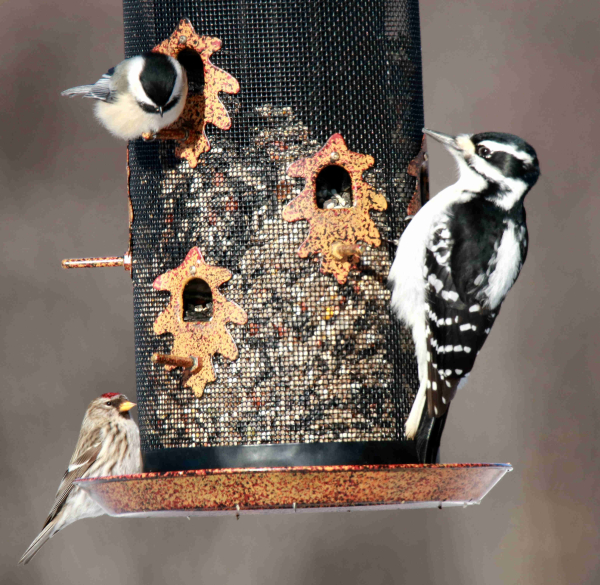As other seasons close, Iowa hunters turn attention to coyotes

An expected 10,000 to 15,000 Iowa hunters will turn their attention to pursuing the state’s top predator after Jan. 10. That’s when most of Iowa’s hunting seasons close, and coyote hunting begins in earnest.
Although its season never closes, coyotes are hunted most often during the winter. The number of Iowa coyote hunters and harvest has been at a record level for four of the past five years, thanks in part to predator hunting shows and because coyote fur has held its value as most other pelt prices have declined.
“Coyote pelts go for anywhere from $15-$30 per pelt depending on the quality and Iowa’s pelts are considered average. Last year’s average price was $17. The top pelts come from the Dakotas, Montana, and Saskatchewan and Alberta, Canada,” said Vince Evelsizer, state furbearer biologist with the Iowa Department of Natural Resources. Coyote fur is used as trim for hoods and coats in foreign markets.
Coyote population is distributed fairly well across the state with the highest population in western Iowa. Coyotes are habitat generalists and can be found near large brushpiles, timber and grass fields, and in particular, fields with switchgrass.
Hunters prefer a fresh layer of snow for tracking and the white background makes coyotes easier to see from a long distance. Wind is critical to coyote hunters because it impacts where and how they set up for calling and pursuing coyotes as coyotes have a keen nose and are naturally wary. Wearing snow colored camo is often effective to avoid detection.
Hunters can use predator calls, hunt day or night, use rifles, may hunt over bait and use groups of hunters and or hounds to round them up. There is no bag limit and coyotes can be hunted on a hunting or furharvester license.
“We receive complaints from the public about coyotes’ impact on young deer, turkeys and rabbits; harass pets, and farmers’ loss of livestock. So in that respect, hunters provide an important service by hunting coyotes,” Evelsizer said. “That being said, they’re a very wary game animal worthy of respect. We don’t allow the use of artificial light for night hunting on purpose because we encourage fair chase and it could increase the incentive to misuse the technology to poach deer and other wildlife.”
Coyote trapping is allowed, but it must be done during the trapping season.
Coyote hunting dos & don’ts
Hunters are reminded that the way they hunt reflects on all hunters.
“With our coyote hunters, we especially want to emphasize respect for landowners and their property lines. Take the extra time to close their gates, obey the laws for safe shots, and thank the landowner – keep your interaction with folks while out hunting positive,” Evelsizer said.
Most coyote hunting takes place on private land, and occasionally hunters will cross property boundaries which lead to trespassing complaints. Hunters cannot pursue coyotes using a snowmobile, aircraft or with the aid of artificial light, regardless of light color.
- Be sure to close all gates that were opened, not trespass where permission was not given and to follow fair chase principles
- Don’t shoot over any road right-of-way, gravel or paved
- If running dogs, be sure to have permission from all landowners in the area where the hunt will take place
- Be sure of the target – make sure it’s a coyote and not a dog
Identification
Coyote hunters need to be aware of the possibility – however remote – that the animal they see through their scope is not a coyote but a wolf passing through the state.
“We’ve had a slight increase in the number of reported wolf sightings over the years, and had four wolves shot by coyote hunters during the last three years. They were likely members of the Great Lakes population from Wisconsin or Minnesota that were wandering through,” he said.
Wolves are protected in Iowa and there is no open season. Shooting a wolf has the potential to bring state and or federal fines.
“Hunters want to do the right thing. One of the first rules in safe hunting practices is to positively identify your target and what is behind your target before taking a shot. Wolves are two to three times the size of a coyote. If what you see is larger than the average coyote, it is definitely worth another look before pulling the trigger,” Evelsizer said.
Evelsizer said other than the obvious size difference – coyotes typically weigh 25-40 pounds, while wolves typically weigh 70-110 pounds – there are other characteristics to help determine the identity of the canine.
Coyotes have a pointed snout and their ears are larger proportionally in to their body. Wolves are taller than coyotes, have long front legs and a heavier, squarer frame. There is more detailed information on coyote and wolf characteristics at www.iowadnr.gov/hunting and scroll to the bottom then click on Iowa’s Occasional Wildlife Visitors.






